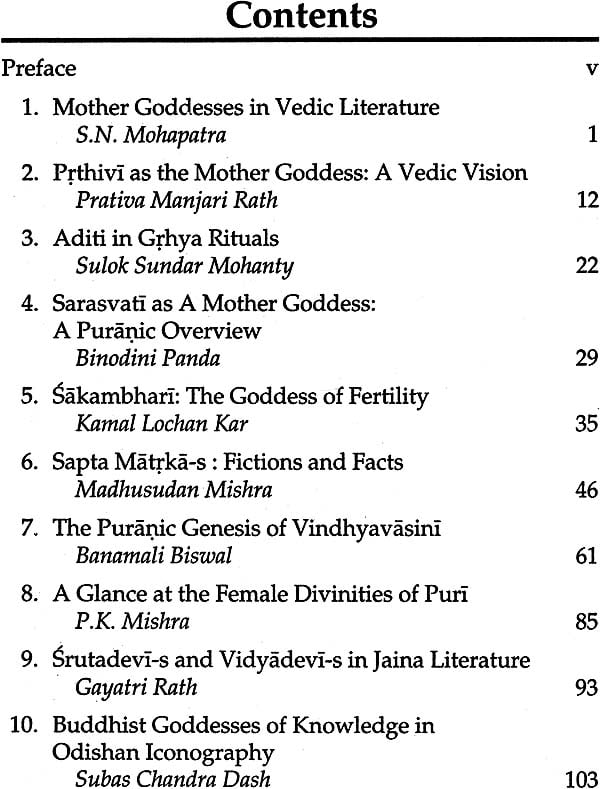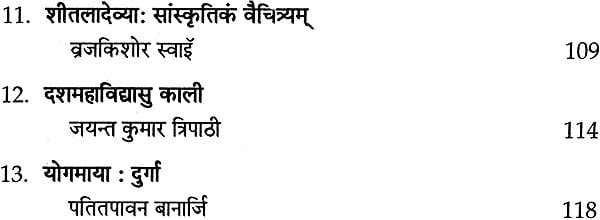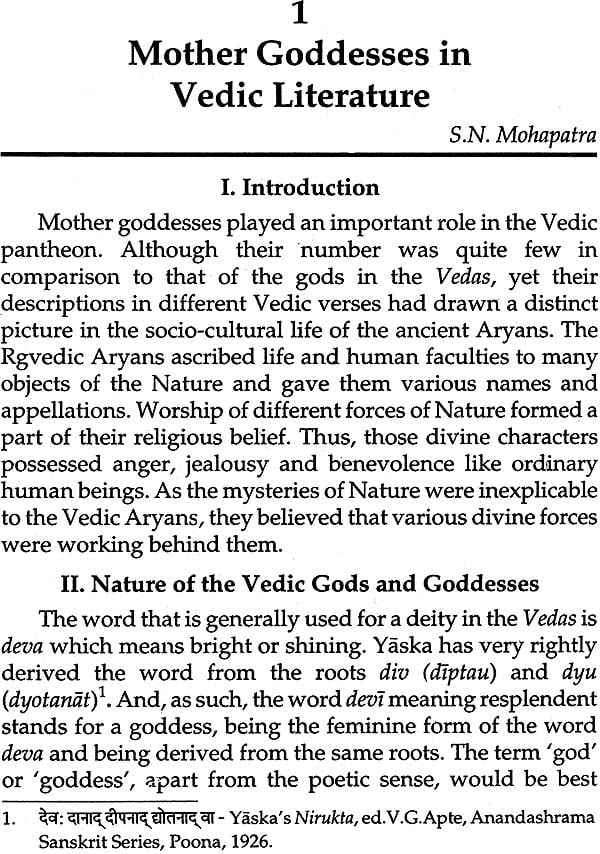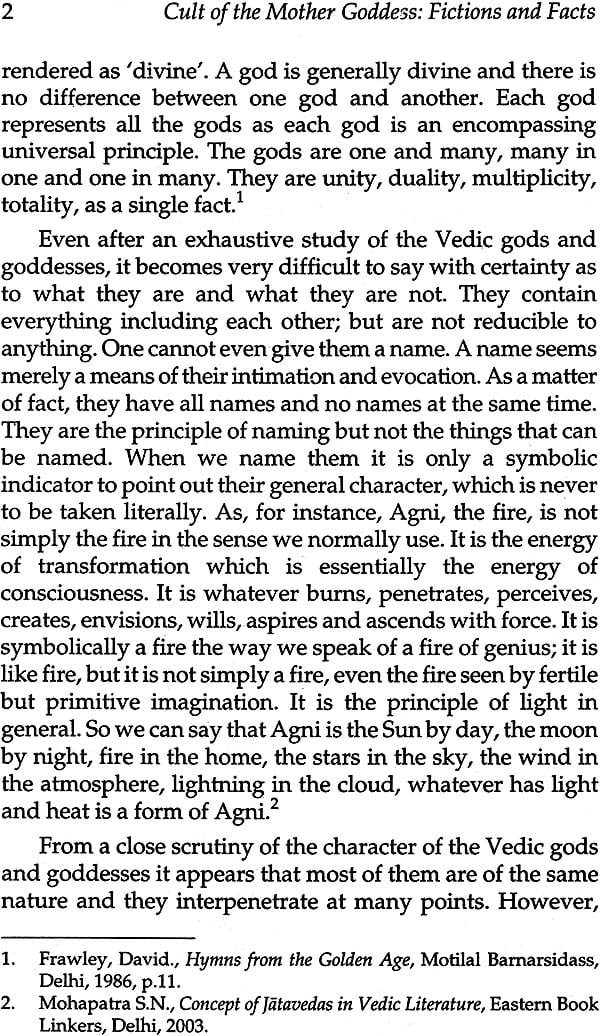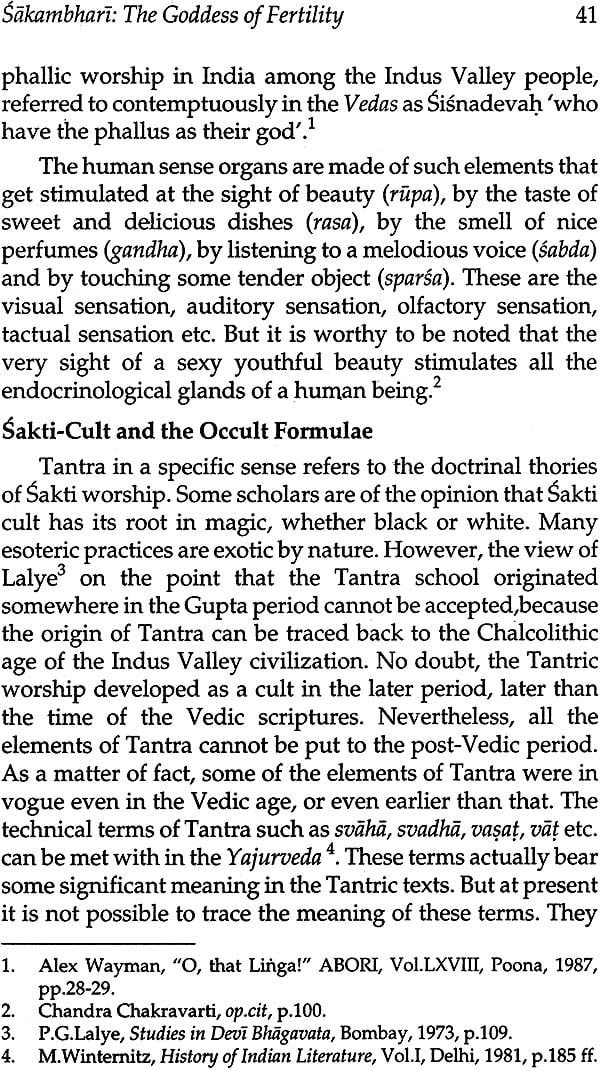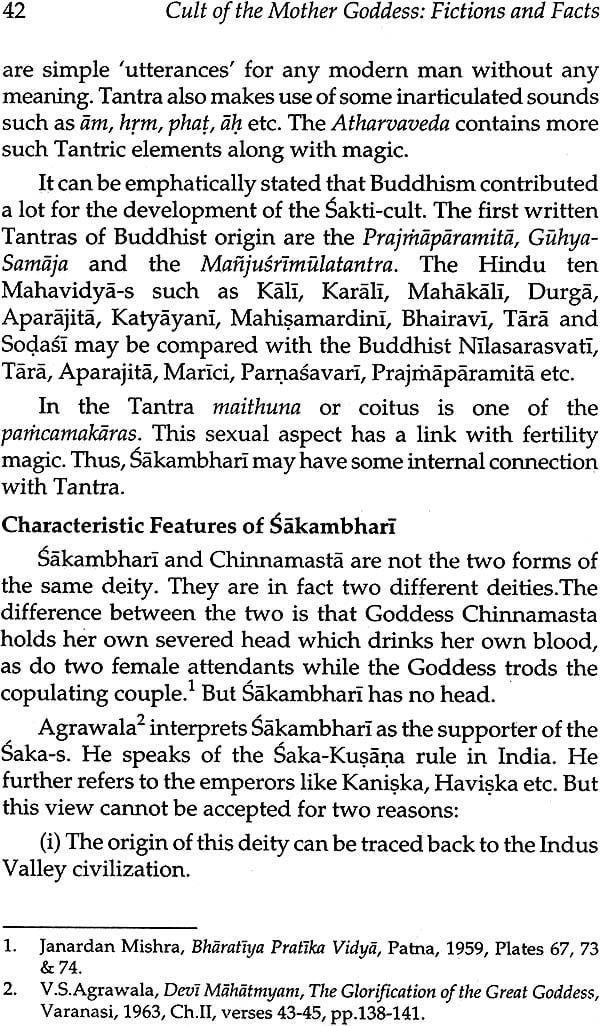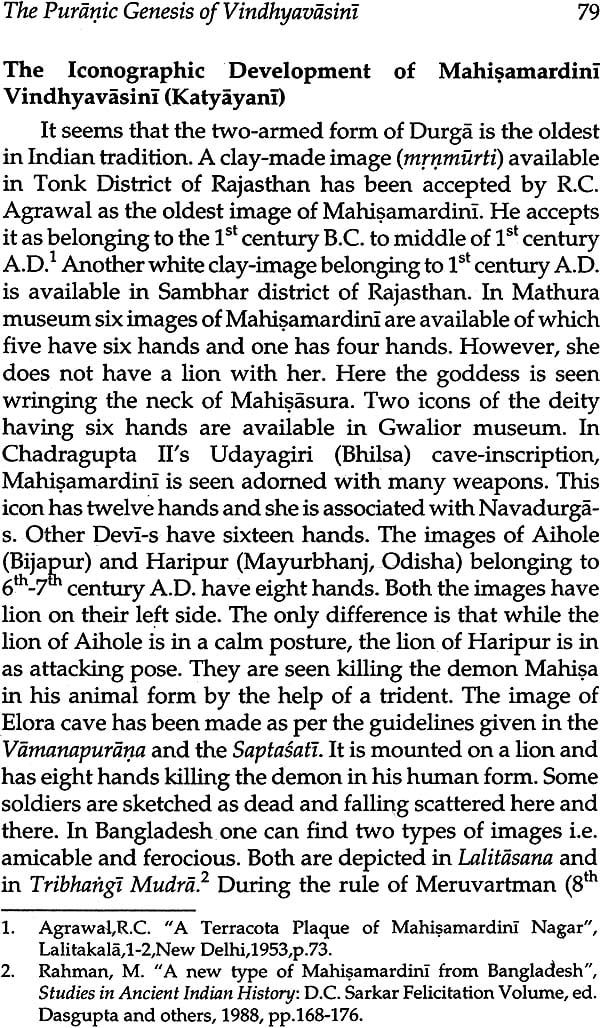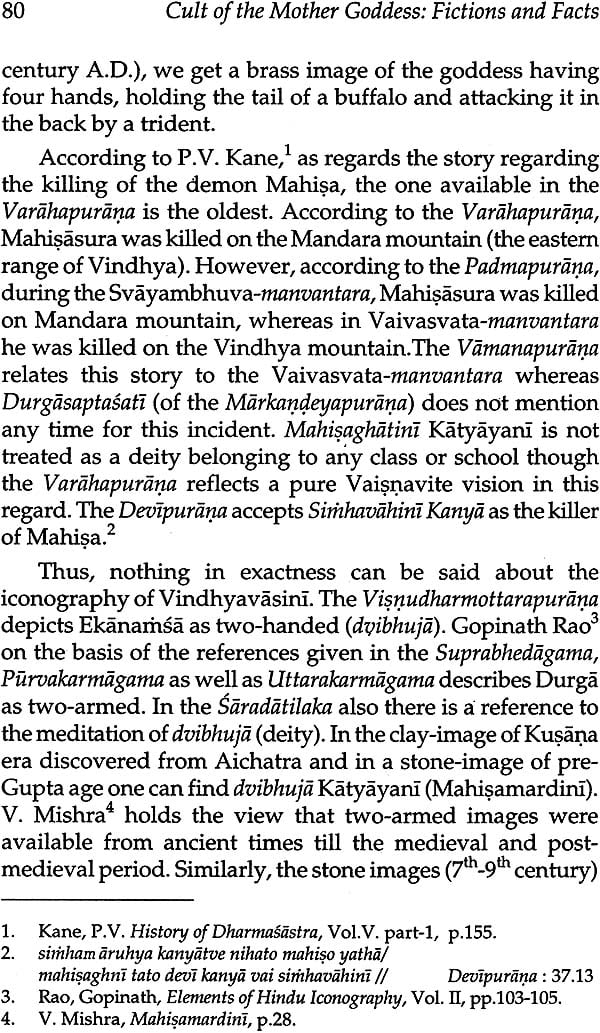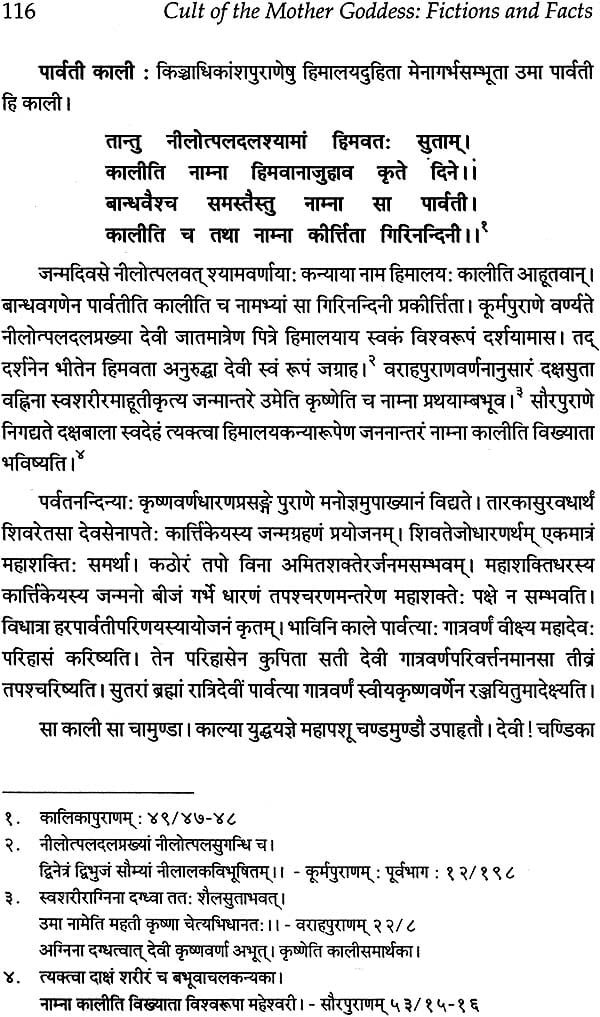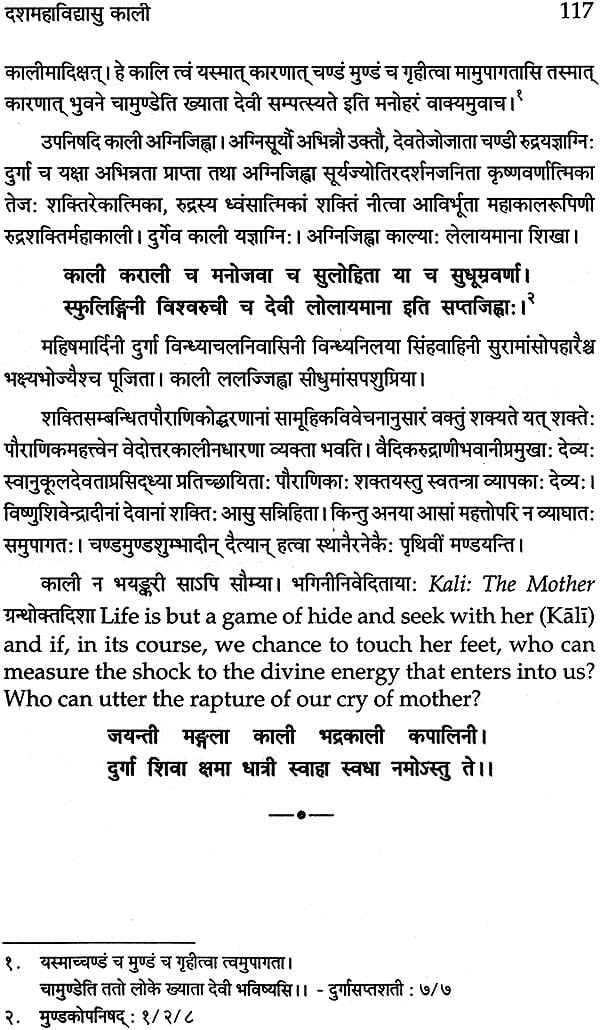
Cult of the Mother Goddess (Fictions and Facts)
Book Specification
| Item Code: | NAF714 |
| Author: | Dr. Madhusudan Mishra |
| Publisher: | Eastern Book Linkers |
| Language: | English |
| Edition: | 2013 |
| ISBN: | 9788178542461 |
| Pages: | 135 |
| Cover: | Hardcover |
| Other Details | 8.5 inch X 5.5 inch |
| Weight | 330 gm |
Book Description
About the Book
The cult of the mother goddess is global in character. However, in the Indian context it is highly intriguing because of the complexities involved therein. While in some cases, its origin is traced to the folk tradition of the tribals, in some other cases deliberate attempts have been made to Aryanise individual deities by creating numerous myths and legends regarding their genesis and growth. With a view to exploring the reality behind such myths and presenting the facts regarding their original nature, a U.G.C. sponsored national seminar was organized on "The Cult of the Mother Goddess: Fictions and Facts". The present book is the outcome of the seminar. The edited version of the articles presented and discussed in the seminar is so arranged that it demonstrates a coherent depiction of the genesis and advance of the Mother Goddess Cult in India in manifold forms and features, such as Vedic, Puranic, Buddhist, Jain and folk traditions by studying them in a historical perspective.
About the Author
Dr. Madhusudan Mishra (born 1964) had his Post-Graduation in Sanskrit from Utkal University, Bhubaneswar (1985) securing the coveted First Class Fist position and M.Phil. (1987) and Ph. D. (1993) from the University of Poona. Prior to his joining Orissa Education Service, he had worked in the Vaidika Samshodhana Mandala, Poona in the Kanva Samhita and Avesta projects (1987- 1992). He has to his credit four books, (1) Critical Study of the Varttikas of Katyayana, (2) House- holders' Discipline in Jainism, (3) Vedic Scholars from the West and (4) Kalpana O Vastavata. In addition, he has edited one Commemoration, two Felicitation Volumes and the proceedings of three National Seminars. A regular contributor to all leading journals, Dr. Mishra has published 50 research papers in English and Hindi: At present, he is serving as a Reader in Sanskrit in KKS Women's College, Balasore,Odisha.
Preface
Every creation owes its origin to some sort of power (sakti), either physical or mental In the history of world religion, this creative ability is seen to have been exclusively vested with the female force. In the Indian context, the devotees of such creative power are known as Sakta-s and the process of worship adopted by them is called Saktadharma. Scholars generally ascribe two reasons to the genesis of Saktadharma, namely, the Aryan and the non-Aryan. Most of them opine that it is an advanced form of the pre-Vedic mother goddess adoration. Archaeological evidences accessible so far facilitate them in advancing such a view. Specifically, the beheaded women idols excavated from West Asia and Southern Russian plains embolden their observation, as more importance has been laid on the genital organ of the female powers in comparison to their other organs.
Anthropologists divide the aborigines into three categories: 1. haunters, 2. cattle rearers and 3. agriculturists. While the first two groups considered the women as the source of all creations, the third one discovered a new creative power i.e. the earth which has mammoth creative clout in the form of fertility. This resulted in establishing a universal unity between the feminine power and the earth. Thus, the entire humanity unequivocally admitted the role of the feminine energy and the mother earth behind all creations. Thus, the characteristics of women power were extended to the mother earth .As a result, we observe that in the folk tradition of Punjab the mother earth remains untouched for a week every month. In the Deccan during Navaratra observance, the temple at the mother earth remains closed to the public. In Odisha, it is believed that the mother earth undergoes menstrual period for three days during the Raja festival. The earth is not tilled during these three days, i.e. last day of the month of jyestha and the first two days of Asadha. The most vibrant reflection of this tradition is observed in the Kamasksa temple of Assam where the temple of the goddess remains closed during her menstrual phase.
In the ancient Indian marriage ceremony the woman was being described as a fertile soil for sowing of seed. The Aharvaveda (XIL1.2) declared in no uncertain terms that the earth is the mother and human beings are her offspring. The Manusmrti (9.33) described the women as soil and men as seeds (ksetrabhuta smrta nari bijabhuta smrtah puman). Sir John Marshall believes that the nude female idol discovered from -Harappa is that of the mother earth. The thighs of the idol ire wide open and make the genital organ quite distinct. A small tree is seen to be coming out of that idol. Marshall explains it as a representation of the power of reproduction and greeneryof the mother earth. The ring stone discovered from Harappa, Taksasila, Rajaghat, Kosambi and Patna have been interpreted as the symbol of female reproductive organ. They appear as Cakra-s and Yantra-s in the mother goddess worship of post-Gupta period.
Similarly, the supremacy and significance of the feminine powers is also attested in the Vedic literature in a most prolific way. Female powers like Usa, Aditi, Sarasvati, Ida Vak Rodasi, Prthivi, Purandhri, Anumiti etc. occupy pivotal positions in it. These deities get substantial elaboration in the later and post-Vedic literature. With the passage of time, the worship of the mother goddess became intimately associated with the religio-cultural set up of India. This resulted in influencing the atheist faiths like Jainism and Buddhism. Thus, we notice detailed description of different goddesses in Jaina texts like the Uttaradhyayana Sutra and Acara Dinakara with the emergence of different sects in Buddnism, goddesses like Paththavi (Prthivi), Lakhi (Laksmi), Siri (Sri) etc. got prominence in the Hinayana tradition. Similarly, in the Mahayana tradition, the five Dhyani Buddha-s such as Amitabha, Aksyobhya, Vairocana, Amoghasi ddha and Ratnasambhava respectively got five female powers, namely, Pandara, Mamaki, Locana, Tara and Vajradhatvisvari. As an outcome of the cultural amalgamation, Buddhist Tara entered into the Hindu pantheon as one of the ten Mahevidya-s and the tribal deity Parnasabari into the fold of Buddhism. During 5th-6th Century A.D. Saktism got a firm foundation and therefore attempts were made to accord a sastric sanction to it by reinterpreting the ancient texts and by composing new texts to cater to the need of the hour. Keeping pace with the number of the texts, the number of female divinities went on rising. Thus, we notice the concepts like tri-sakti, san-matrka, sapta-matrka, asta-matrka, asta- candi, nava-durga, dasa-mahavidya, sodasa-vidya, astadasa- matrka, catuhsasti-yogini etc. The trend culminated in the setting up of one hundred and eight sakti-pitha-s in different parts of India. Thus, we observe that the cult of the mother goddess manifest itself in innumerable forms and features in the Indian subcontinent.
With a view to studying some such vital forms and features, the Department of Sanskrit of KKS. Women's college, Balasore, Odisha conducted a National Seminar during the year 2008 with the financial assistance of the University Grants Commission. I am, indeed, delighted that e edited version of the papers presented and discussed in e seminar is being brought out in the form of a book .While resenting the same in the hands of the scholars, I feel it a bounden duty to put on record my deep sense of gratitude " the scholars who have contributed the articles for this volume. I acknowledge, with appreciation, the financial assistance of the University Grants Commission in our humble academic pursuit. Mr. Ravi Malhotra and Deepak Malhotra of Eastern Book Linkers, Delhi deserve my thanks for evincing keen interest in publishing the book with their usual care and swiftness. I must crave the indulgence of the scholars for the printing errors that might have crept into the book in spite of my best efforts.
